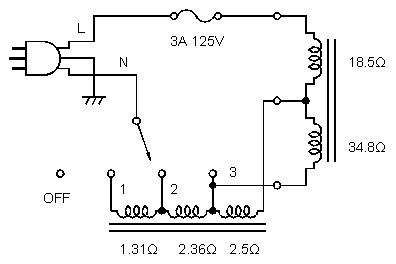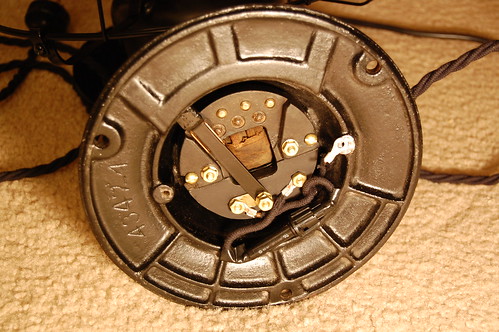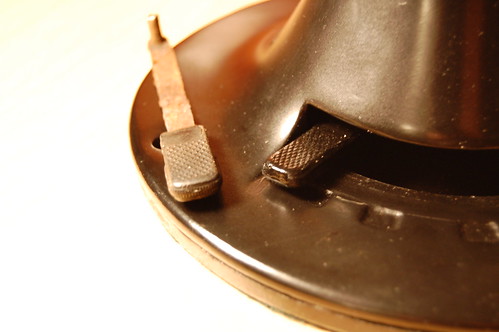Emerson 28646 Restoration Details
August 1, 2008 11:08 pm RestorationRestoring the antique fan also involved some safety upgrades. Along the way, I derived the schematic. The motor has three connecting wires, but the trick was to figure out how the wires connected to the motor windings.
I measured the resistance between each wire, assigning the wires the arbitrary designators A, B, and C. The resistance between A and B is 53.3 ohms, B and C: 35.3 ohms, and A and C: 19.1 ohms. Assuming the star configuration shown in the figure below, it’s possible to calculate R1, R2, and R3 as follows. R1 + R2 = 19.1, R2 + R3 = 53.3, R1 + R3 = 35.3, therefore (solving for R1, R2, and R3 using substitution) R1 = 0.55 ohms, R2 = 18.55 ohms, and R3 = 34.75 ohms. Clearly R1 is just the center tap and R2 and R3 are motor windings.

Based on this information and similar measurements performed on the speed coil, the schematic was reproduced as follows:

This schematic shows two of the safety upgrades. First, I added a 3-prong AC cable and connected the metal chassis to the safety ground. Then, I added a fuse inline with the AC hot. The fuse serves two purposes: it prevents a fire if the motor windings short, and it also will blow if the AC hot shorts to the chassis.
Here’s what the underside looks like without the cover. The switch contacts, the fuse, and part of the speed coil are all visible.

The original speed selector switch lever was metal, which was not very safe because the lever was connected directly to AC hot. Only the plastic knob prevented a nasty shock. I fabricated a new lever out of FR-4 fiberglass sheet. The knob itself was originally molded onto the metal lever and I could not remove it, so I made a new one by casting a replacement out of epoxy.


joseph leavines :
Date: May 24, 2014 @ 6:25 am
i just started collecting fans and attempting to restore them. i have not mastered the wiring yet. i sure wish i had ur knowledge and abilty to do the wiring. from ur writing and pictures i would call u a genious. i do learn something each time i attempt to restore one. i fell in love with the old fans about a year ago and hope to spend the rest of my life collecting and restoring them. i hope i can one day learn a fraction of what u know.
eric :
Date: May 26, 2014 @ 2:37 pm
thanks Joseph, i have an engineering degree but i still make plenty of mistakes. enjoy collecting, and don’t forget to join the fan club. 🙂
Greg wilkinson :
Date: September 11, 2020 @ 1:56 pm
I do not have the speed coil with this fan is there anyway to wire the motor direct??